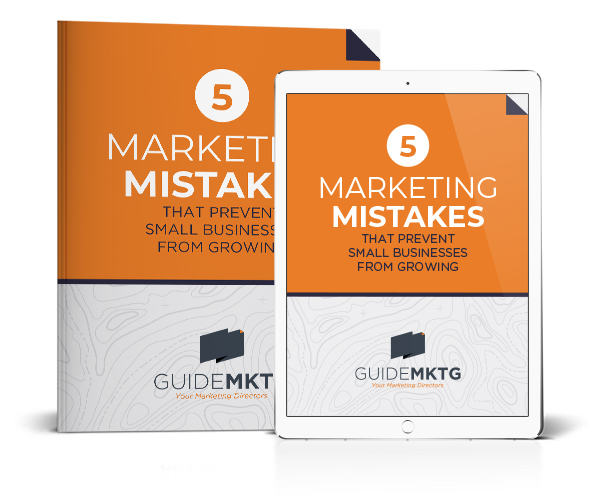Are you drowning in data? Or are you so intimidated by data that you pretend like it doesn’t exist? Either way, this complete guide to easy data analysis for small business owners will help you overcome analysis paralysis (or data-timidation) in no time.
What is Data?
Believe it or not, you use data all the time in everyday life. Do your kids get report cards? That’s data. It tells you what areas they excel in and where they can improve.
Do you look at your family or business budget before making a big purchase? You’re analyzing data. The numbers tell you how much you can spend without getting yourself into financial trouble.
Those data sets probably don’t feel super overwhelming because you understand what you are looking at and what to do with that information. Small business data analytics can work the same way.
Business data is simply information about your business’s sales and marketing efforts that shows you how well it’s working (or not).
We often think of data as a long, confusing list of numbers and statistics. Although unstructured data can be confusing, when you organize it in a way that makes sense to you and learn to interpret the data effectively, it becomes a valuable tool full of meaningful insights.
It is also important to recognize that data isn’t all about numbers. Customer data, like demographics, buying habits and even the thoughts and opinions they leave in reviews, is just as valuable as the numbers.
Why Do Small Businesses Need Data?
Small business data analytics helps you make informed, data-driven decisions. Instead of “going with your gut” or using trial and error to make your business decisions, you’ll have multiple data sources to guide you. If you are looking at relevant data, it will always point you in the right direction.
How do Small Businesses Collect Data?
Data collection, also called data mining, can look a lot of different ways. There is no one-size-fits-all approach. You could use:
Customer surveys to get to know your customers better and learn more about their preferences, habits, and needs.
Web analytics tools to discover how people are finding your website, which pages they viewed, and how much time they spent on your site.
Email marketing analytics to see how many people are opening your emails, what links they are clicking on and how many of those clicks turn into sales.
Social media analytics to learn how people are interacting with your social media content or ads.
Sales data to see when and where transactions take place.
Industry reports to gain valuable insights into market trends.
If you are already feeling overwhelmed by the sheer volume of data lurking out there in the digital world, keep reading. This simple plan for small business data analytics offers a stress-free analytics strategy anyone can handle.
An Easy Data Analysis Plan for Small Businesses
Step 1: Start Small
Let’s start by busting a big data myth-you don’t need to spend hours data mining to gain insights into your business. (You don’t even have to pay attention to all the data available to you!)
The key is to start small. Pick one area of your business that you want to improve, like sales performance, the customer experience, or using more targeted marketing campaigns, for example.
Then, look for relevant data.
For instance, let’s say you’re a retail shop and you want to increase sales. Look at your inventory management tool to figure out what is already selling well. Then, go beyond the numbers and analyze your customer behavior:
- Who is buying?
- When?
- How much?
- How are they finding you?
- What else is going on in your store/community/the world around you during these spikes in sales?
Use this information to identify patterns. When you know what is already impacting your business performance, you can optimize processes for even greater success.
For example, let’s say that during your data analysis, you learn that sales always spike at the end of the month, during the same time slot that the park across the street hosts an outdoor market.
To give yourself an even greater competitive advantage, you could set up a table in the market with a few of your best sellers, put a display outside your store to draw people in, or send an employee to the market to hand out coupons or flyers.
Start by leveraging what is already working well.
Once you’ve gotten the hang of using data to improve one aspect of your business, you can keep going and dig into another area that needs improvement.
Step 2: Pay Attention to the Statistics That Matter
I know I already alluded to this above but it is worth repeating. You don’t need to pay attention to all the numbers. Focus on the statistics that matter most to your business so that you don’t drown in a sea of raw data.
For example, if you are a cafe owner, the number of coffee cups sold per day is much more important than your social media traffic. For an e-commerce store, conversion rates and cart abandonment percentages are probably more important than the number of views on your latest YouTube video.
Keep your eye on the prize (improving that one area of your business that you identified above) and focus on data insights that will help you reach that goal.
Step 3: Use Systems That Make Sense to You
The best data analysis system is the one that you can understand. There’s no one-size-fits-all solution. Whether it’s using a spreadsheet, investing in data analytics tools, user-friendly software, or simply jotting down numbers in a notebook, find a method that you feel comfortable using.
Remember, this isn’t about impressing anyone with your technical prowess. It’s about gaining actionable insights to help your business grow.
Step 4: Know the Story Data is Telling You
Numbers are like characters in a story, and your business is the epic tale. As a small business owner, you’re the author, and it’s your job to decipher what the data is trying to tell you and use that information to write the next chapter.
As we’ve talked about in the examples above, the numbers are only a piece of the puzzle. Data analysis is figuring out what that information means and what you can do with it.
So, if you notice a spike in website traffic after launching a new product, that’s your data telling you that customers are interested. If you see a sudden drop in customer satisfaction scores, it’s a red flag waving for your attention.
Step 5: Have a Thinking Partner
Sometimes, when you’re knee-deep in spreadsheets and charts, you lose sight of the bigger picture and get caught up in the details. That’s where a trusted thinking partner comes in handy.
Whether it’s a colleague, mentor, or Guide MKTG, having someone to bounce ideas off of and challenge your assumptions can be a game-changer. A new set of eyes will provide a fresh perspective on your data and valuable insights you might have missed.
If your business needs a thinking partner to get unstuck and send your sales soaring, schedule a call with Guide MKTG.
Data analysis doesn’t have to be a headache. We can analyze your marketing for you so that you know exactly where to focus your efforts for the biggest ROI. We can even stick around as your long-term thinking partner so that you’ll never have to decipher data alone again. Ready to make data-driven decisions that boost your business? Schedule a call with Guide MKTG today.





